Links to books
On this page you find links to the following categories of books:
Books on cell culture technique
InCelligence* Favorite
|
The immortal life of Henrietta Lacks R. Skloot, Random House, 2011 Everyone who works with cells should read this book: moving, embarrassing but in the first place true! The story of the HeLa cell line and parts of the history of Henrietta Lacks who did not know that her cells were used by biomedical researchers and that she would become "immortal" this way. In this case, a cell line has truly changed the world and has tremendously contributed to the rise and progress of the discipline "cell biology". Many tools and medication such the as polio vaccine were developed with the help of HeLa cells. But the family of Henrietta Lacks would have appreciated to decide for themselves whether the cells should be used for research and whether they should be marketed by the tons. Old scientific habits that today are just as true and disconcerting as they were 60 years ago. In the end, the question remains whether progress is more important than ethics. A well written story with an extremely well researched background. Price: approx. 10 USD at Amazon Also check our movie page for Adam Curtis "The way of all flesh" also addressing Henrietta Lacks. |
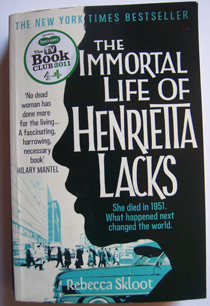 |
Books on cell culture technique
|
Culture of Animal Cells: A Manual of Basic Technique and Specialized Applications Freshney R.I., Wiley-Blackwell, 6th ed., 2010 The Freshney is probably the thickest and also most comprehensive book that provides an overview over basic cell culture techniques and further specialized areas. From history over lab organization and equipment to routine methods, primary cells, contaminations, counting, verification and validation. Name it - its there. The most important and impressive specialty is however, that in all chapters the author talks about problems and dangers that might arise or are connected to the topic. Maybe it takes someone who is a little older and as experienced as Ian Freshney to talk openly about things many researchers do not want to hear for decades. For example, Ian Freshney keeps up a list of cell lines with known/proven problems of cross-contamination. This problem is known since the beginnings of tissue culture but the largest fraction of cell biologist does not know about it or does not take it seriously. The book chapter makes clear that cell line identification is a necessary part of quality control. Several chapters start with the section "limitations" which is the best start, we think. One should always think about what a method can accomplish and what not. Furthermore, the book offers protocols to many methods described. These range from basic techniques up into cell analysis in areas such as growth, proliferation, viability, and cytotoxicity. For some methods several protocols for certain types of primary cells are given. In our opinion every lab should own at least one copy of the Freshney! Price: approx. 72 USD at Amazon |
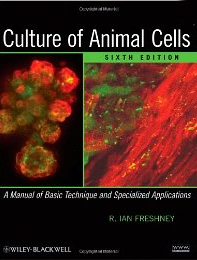 |
Microbiology books
|
What's so funny about Microbiology (English) J. Czichos, Eigenverlag (Deutsch) Everyone working with cells has had contamination. These "unpleasant encounters" are only rarely taken with humor. However, maybe you can be a little less annoyed next time when you remember the personal insights in life from a bacterial point of view so perfectly illustrated in this hilarious comic. The comics are funny but educational at the same time. The microbiologist Joachim Czichos draws what he thinks bacteria might feel or think. He explains microbiological terms in such a great way that you will never forget what Ethanol does to them, that sterility by far is not absolute and why trypanosoma escapes the immune system. Price: ca. 8 Euro at Amazon or on-line at Wissenschaft Aktuell |
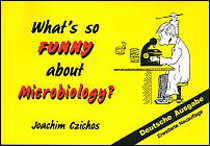 |
Online Textbook on BacteriologyTodar's Online Textbook on Bacteriology Kenneth Todar, PhD This is a free online textbook put together by Todar Kenneth. It contains all kinds of basic information about bacteriology in general and specific bacterial species, especially pathogenic bacteria.
The online book has 5 chapters: Link to Textbook on Bacteriolgy. |
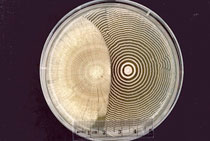 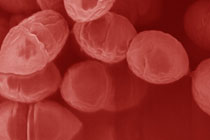 |


